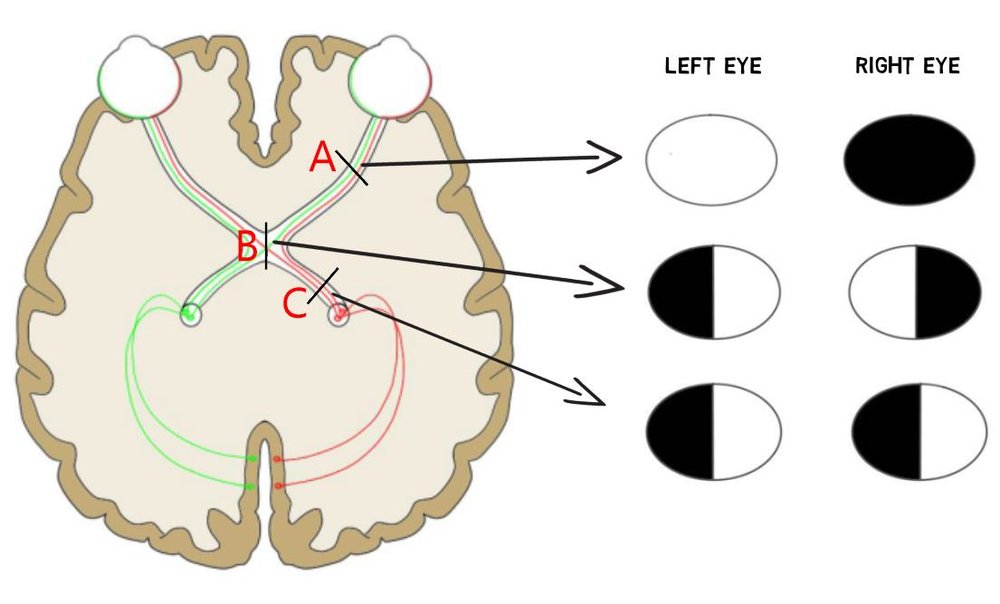Visual Defects and Correction

We depend a lot on the sense of sight to interact with our surroundings. In split seconds, our eyes work with our brains to help us know the size, shape, color, and texture of an object. They let us know how near it is, whether it’s a still object or a moving object, and how fast it’s moving.
Every day, our eyes give us messages that help us understand the world around us.
Although the eyes are smaller than many other organs of the body, its structure is very complex. The two eyes work together to see depth, making us able to judge distance and the size of objects.
The two eyes not only work together, they also work with the brain, muscles, and nerves to make complex visual images and messages. Also, our eyes continuously adjust themselves to the changing environment; for instance, they can adjust so that we can see in a nearly dark room or under very bright light.
WHAT ARE VISUAL DEFECTS?
The ability to see is called vision or eyesight. Sometimes, a person’s eye cannot focus the image of an object properly on the retina. In such cases, the vision of the person becomes unclear or blurred, the person cannot see clearly and comfortably. This is what is called a defect of vision or a defect of the eye.
COMMON TYPES OF EYE DEFECTS AND THEIR CORRECTIONS
- Refractive errors:
These are the problems that eye doctors check for routinely in your vision test. Refraction means the bending of light rays to focus the light coming from an image. Refractive errors are problems with the focusing of the eye, which causes the image one sees to be blurred. Refractive errors include:
- Astigmatism: The defect in astigmatism is that there’s a problem with the curve of the cornea. This causes part of the eye’s image to be blurry. Corrective lenses such as contact lenses or glasses can usually correct vision in people with astigmatism can be used.
- Myopia: Also called nearsightedness or shortsightedness. It occurs when the eye focuses the image of an object in front of the retina instead of directly on the retina. In most cases, people can’t clearly see objects that are far away but can see objects that are close by. The condition tends to get worse through childhood and adolescence but stabilizes in adulthood. People with this condition may need to wear glasses or contacts to correct their vision. Also, laser eye surgery is now being used in adults to correct nearsightedness permanently by changing the shape of the cornea. Laser surgery is not used for teens because the eye may still be growing.
- Hyperopia: Also called farsightedness or longsightedness. It occurs when the image is not focused on the retina, but behind it. This may make it difficult to see close objects clearly, while far away objects are seen more easily. Many younger children are hyperopic, but because of the ability of the eye to focus itself, may not need glasses to correct this. Glasses or contact lenses can correct this problem.
B. Blindness:
Blindness is the loss of useful sight. Blindness can be temporary or permanent and it has many causes, such as birth defects or damage to any part of the eye, the optic nerve, or the area of the brain responsible for vision. The visual impairment cannot be corrected with corrective lenses, but sometimes may be corrected with surgery. Diabetes and eye changes caused by aging account for most blindness in adults in the United States. But eye injuries or eye trauma are the most common causes of blindness in children and adolescents.
C. Colorblindness:
Most people who are color-blind can see some colors. A person who is color-blind often confuses some colors with others, such as red and green. People can be born color-blind, or they may develop it over time. Color blindness cannot be corrected.
D. Conjunctivitis:
This refers to inflammation (redness, pain, and swelling) of the conjunctiva. One type of conjunctivitis, pinkeye, is a common contagious infection in which the eyes become pinkish red and watery and may form pus. Pinkeye is usually treated with eye drops. Conjunctivitis also can be due to allergies or from something that irritates the eye.
These are just a few out of many eye defects that exist.
Vision problems are often more difficult to diagnose in children than adults. Since vision is vital for learning, parents should always ensure to pay close attention to their children’s eye health and work hard to safeguard it. Actions such as always moving close to objects in order to see clearly, straining or widening of the eyeballs, or being unable to see a board clearly in class and continuously poor grades, frequent headaches at the end of the day could be signs that point to a visual defect. Always consult a doctor for a diagnosis. You can speak with a doctor for free on the flexicare HMO plan by initiating a message via the AI health messenger here or via your dashboard on the website.
Visual screenings and eye exams can help identify visual problems in children early, and enable them to receive corrective treatment thereby improving their eyesight.
From someone who had an undetected eye defect through childhood, I’d advise that, as much as you’re conscious of your vision and overall health, be on the lookout for your children. They may not complain of eye problems because they may not know there is a problem, but it’s a parent’s job to be observant and to know better.

